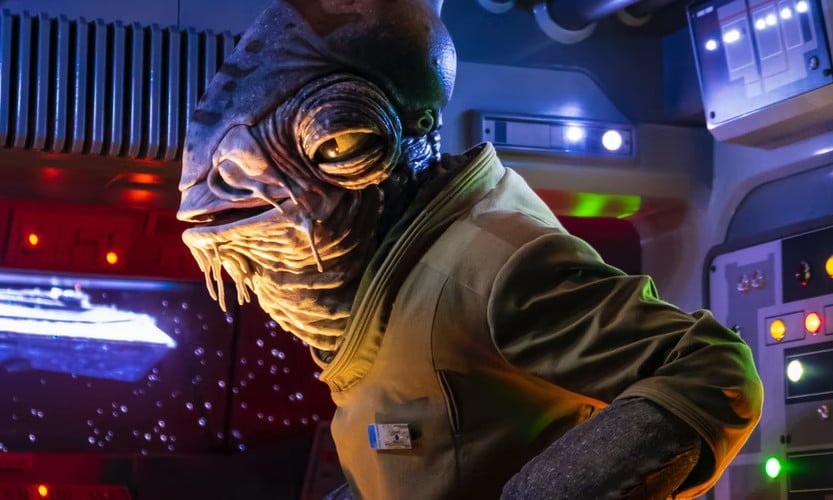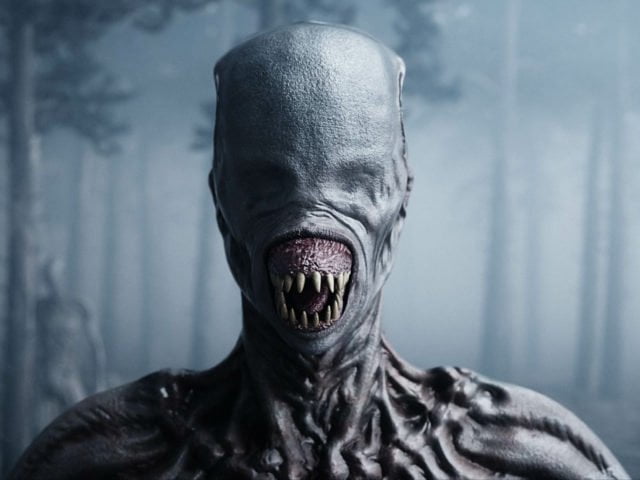Your character is sprinting down a dark tunnel, footsteps crashing against the hard stone and echoing all around. The tunnel opens wide, a ledge rapidly approaches – this is the lair! Your character slides to a stop and sees… what? Something awe-inspiring? Something terrifying? Perhaps both?
All readers, and indeed writers, love nothing more than seeing fresh and exciting fantasy beasts and mythical beings in their books. The presence of unique, creative monsters and imaginary races emboldens any fantasy, sci-fi, gothic or horror story. Their presence brings a book’s setting to life, inspiring questions of how they came to be, and how the inhabitants of that world interact with them – or not.
Imaginary literary creatures also massively inform a story’s plot and even enhance character, whilst being wonderful vehicles for symbolism and allegory.
So, as a writer, how do you get your monster right?
What Are Fantasy Creatures?
Fantasy creatures are nothing new. Monsters made from our imagination have been around as long as the humans who created them.
When it comes to inspiration, the greatest place to start is in the past and studying the legends that have inspired many an iconic story and influenced human civilisations. Every country in the world has its own myths and legends, and in turn, its own fantastical beasts.
Take the Twelve Labours of Heracles from Ancient Greece. They are rife with legendary beasts based on very real creatures from our world, such as the Nemean Lion. What makes the Nemean Lion mythical is the small but important detail that its golden fur is impenetrable, so it could not be killed by conventional means. This elevates the labour of the hero by heightening the stakes and presenting a unique challenge for them to overcome.
Another of the monsters, the Hydra, has inspired many terrifying literary monsters. A highly venomous snake-like beast with many heads, it seems imposing enough upon first glance, but when we realise that its heads grow back after being cut off – then it becomes a true terror (anyone spot the similarities between the Hydra and Hagrid’s three-headed dog, Fluffy, in the Harry Potter series?).
Moving away from Greece, we find all sorts of mythical creatures in the infamous Chinese tale Journey to the West. Not only are there dragons, demon kings and ogres, but also a jade rabbit spirit, great white turtle and, above all, the protagonist is the cheeky, troublemaking Monkey King, Sun Wukong.
Norse mythology has frost giants, a giant wolf, undead Draugar, dwarves, elves and even the Mare – a monster that would give people bad dreams by sitting on them in their sleep (I wonder which Norseman’s sleep paralysis conjured that up!).
In Norse myth especially, the design of the creatures was directly used to inform their society and beliefs. Back then townsfolk would wear metal rings around their arms depicting Jormungandr, the great snake that represented the circle of life by biting its own tail. They would swear oaths to their gods, believing they would be protected. In those times, the creatures they created weren’t myths, but real monsters and deities that delivered cautionary tales.
There are mythical creatures in every culture – and all of them are exceptional in their own way. They are often reminiscent of terrifying or intriguing creatures in our real-world or derived from their mythical precursors. And almost all of these fantastical creatures have wound their way into unforgettable fantasy settings, both in our much-loved classics and modern storytelling.
But do these monsters make a difference? In short, yes.
Benefits Of Using Unique Fantasy Creatures In Your Novel
As we excitedly plunge into the vibrant ocean of fantasy creatures, we should take a step back and try to understand what they bring to our stories.
Often a character’s interaction with a fantasy creature will form part of the plot. If we take the earlier example of the Hydra and Nemean Lion, Heracles daubs his arrows in the Hydra’s venomous blood and wears the impenetrable hide of the lion as a cloak. As you can imagine, both concepts have been used in numerous fantasy stories since.
A great deal of exploration of the human soul can be done with monster stories too. In Mary Shelley’s Frankenstein, we get an insight into love, abandonment and discrimination through the lens of a horrifying creature. The monster, as it’s known in the tale, receives its own chapters demonstrating how it thinks and feels. Shelley’s work was a remarkable forerunner for stories using fantasy creatures as a lens of symbolism and theme, such as Octavia E. Butler’s Fledgling.
The existence of a unique fantasy creature, in turn, makes your story unique too. This extends to mythical races such as elves and orcs. Take Lord of the Rings as an example. Would Tolkien’s famous world have had half the cultural impact were it only filled with squabbling human races?
Even in a more grounded fantasy setting, such as George R. R. Martin’s A Song of Ice and Fire (the series that conjured A Game of Thrones) – if we were to remove Targaryen Dragons and White Walkers, would it be the same?
So many mythical creatures have become iconic to the point where their world-building has become canon. Vampires, werewolves, dragons, krakens, and probably a dozen more you’re cursing me for not mentioning.
The truth of the matter is that what makes a fantasy tale stand above the crowd is the strength of its creatures, and how they are used. An unforgettable fantasy world is built of many bricks, but it is the consistency and uniqueness of its creatures that glues those bricks together.
So how do we bring originality to our own creatures?

How To Create Unique Fantasy Creatures
As all writers know, creating something truly unique is a near-impossible task. But don’t be disheartened, as it doesn’t take much to mould something that already exists into something new and gruesome.
Let’s take a look at six ways of doing that:
1. Combine More Than One Magical Element
Let us take the story of the Nemean Lion mentioned earlier. The story uses a very real creature (a lion) but adds the small tweak of its golden fur being impenetrable.
We can do the same thing. What if we take a boar, but say its tusks can conjure lightning? If we want whimsy, what if a character has to catch a quite ordinary-looking mouse, but this mouse weighs as much as an elephant?
In a similar vein, many mythical creatures are mashups of two real creatures. The Chimera was depicted as a fire-breathing lion, with the head of a goat protruding from its back, and a venomous snake as its tail. What if we gave the horn of a rhino to a horse? What if we gave sharks wings? You get the picture…
2. Make Them Human
The term ‘uncanny valley’ (the relationship between the human-like appearance of a robotic object and the emotional response it evokes) is a wonderful tool to use when trying to understand what makes something scary. Taking something into that uncanny valley – that halfway point between familiar and unnatural – plays on some of the deepest shared human fears.
When a werewolf is turned by a full moon, we can’t help but remember who they were as a human. Vampires are so tantalising but unnerving because they can present themselves as humans, but they kill in such a gruesome way. Creatures like Pennywise from Stephen King’s IT tap into that uncanny valley all the time. As would a human who crawls like a spider, or a woman who glides instead of walks, or a child with buttons for eyes (thank you, Neil Gaiman).
3. Give Your Monsters Motivation
Or better yet, an origin story.
Fantasy creatures and monsters are often the villains of a novel, so why not give them depth and complexity? It could be argued supervillains like The Joker, from Batman, or Thanos, from The Avengers, are monsters in their own rights.
Both have penetrated the modern zeitgeist thanks to their detailed backstory and purposeful (or anarchic) motivations. It’s often not enough to make your scary creature bad, if you give them a good enough reason it heightens the stakes and creates discomfort in your readers as they start to question their own morals (perhaps even the monster within themselves).
4. Give Them A Home
Where does your monster live? In its own world? In ours? Or maybe both? Ask yourself what’s scarier, or a bigger challenge, for your characters.
Trans-dimensional monsters are cropping up more and more often in books, TV and film, providing great inspiration for writers. In the Netflix show, Stranger Things, the Demogorgon monster moves between a rural 80s US town and a mouldy mirrored world known as the ‘Upside Down’.
Having contrasting locations (much like foil characters) not only brings style to the story, but also provides parameters and boundaries for your creature. How the creature interacts with our own world will influence the plot, how it behaves, and ultimately how the hero will defeat it.
5. Ask Yourself If The Creature Is Even Needed (Or If You’re Just Having Fun)
Is your creature simply another barrier in your hero’s quest? Are they an integral part of that world? Are they crucial to the plot? Perhaps they’re only there to deliver a message to your reader (or even character).
Whatever their purpose, how and why you have created this fantastical being will change the attributes you give it and how/where it’s featured in your story. We all love a great monster, but a monster for a monster’s sake doesn’t make for a great story. In fact, it may do the opposite, and detract your reader so much from the main plot they stop caring about your hero altogether.
6. Use Nature To Inspire You
As the old adage goes, ‘fact can be scarier than fiction’. You don’t have to look far in the world of animals, plants and unusual habitats, to find inspiration. Mermaids have strong ties to manatees, vampires were inspired by bats, and even something as simple as Jaws, a shark that looks like a shark and acts like a shark but is just really big and really mean, was enough to make an entire generation scared of the water.
Fascinating creatures exist all over our natural world, especially in the depths of the ocean or in uninhabitable rainforests. So get searching and add some of nature’s wonders to your own monsters.
Our Monster Checklist
Once you have come up with your fantastical concept, take a look at our checklist to ensure your creature is consistent within your world and story.
Here are some things to consider:
- What are its strengths and weaknesses?
Vital in any potential confrontation with a creature, we must know what makes it a threat, what makes it special and what might bring it low. Your hero has to overcome it after all.
- What does it look like?
Consider how many limbs it has, its facial structure, if it has skin or fur, its colouring and textures. A big one for me is eyes – missing eyes can be uncanny, beady eyes feels insectoid, large eyes feels cute (perhaps as a trap).
- How large is the creature?
A seemingly inane question, but an important one. If the world is filled with enormous titans, what is their food source? If there isn’t one, are they going extinct? Or, if a creature is tiny, how does it overcome larger foe? Does it exist in a swarm?
- How intelligent is the creature?
In some stories dragons are devastating monsters that never speak a word and sleep on their treasure horde. In others, they talk and even participate in society. Has your creature learned to avoid mortal society? Or have they learned to infiltrate it…or rule it?
- How old is the creature?
This works both for individual creatures and for a species. If a creature lives for millennia, how has it changed? What has it lived through? If a species has existed for only a few centuries, why? Did they have precursors they evolved from?
- Are they hunted? Particularly for dangerous creatures, are the societies around them large and advanced enough to undertake hunts to cull them? If yes, why has this particular creature survived?
- How does it interact with other creatures in the story?
Is it adversarial to your protagonist but buddies with everyone else? Does it forge a bond with your protagonist only? Maybe it’s not a scary monster but a kind and helpful one?
- Name?
With some fantastical creatures the name can come first, but it’s always important to consider why it has the name it does. Did it claim its own name, or did others give it the name? Does it have different names in different cultures?
Fantasy Generators
If you want a jumping-off point for creating a fantasy creature, don’t be afraid to use an online fantasy creatures generator.
A few good ones include:
- For generating names, story concepts, plot obstacles – it has a little bit of everything!
- A direct fantast creatures generator.
- For generating ideas and briefs for creatures.
- For help with fantasy creatures names’.
- Another option for fantasy creatures’ names.
But do remember, when using these generators, you don’t have to stick to the ideas they give you!
Often the best way to use a fantasy creatures generator is to cherry-pick what you like and drop what you don’t. If you’re generating a name and like the suffix but not the main body of the word, keep the suffix and either come up with the rest yourself, or combine it with a body you like elsewhere in the generated list. Likewise with creature skills, weaknesses, looks and so on.
Conclusion
Fantasy creatures have become truly iconic over the years. Having such a rich depth of reference points at our fingertips (from classic books and modern movies, to disturbing works of art and the internet) only makes our jobs as authors more fun.
Never has so much inspiration for such creatures been so accessible, across all cultures. And never before has such strong support existed for adventurous authors wanting to carve their own take on old monsters, as well as feature their own culture and legends into their own work.
So, when creating your fantastical monsters, remember that the sky is the limit. And for some truly horrifying creatures… there’s no limit at all as to how far you can go to make sure we never forget them.
Jericho Writers is a global membership group for writers, providing everything you need to get published. Keep up with our news, membership offers, and updates by signing up to our newsletter. For more writing articles, take a look at our blog page.











